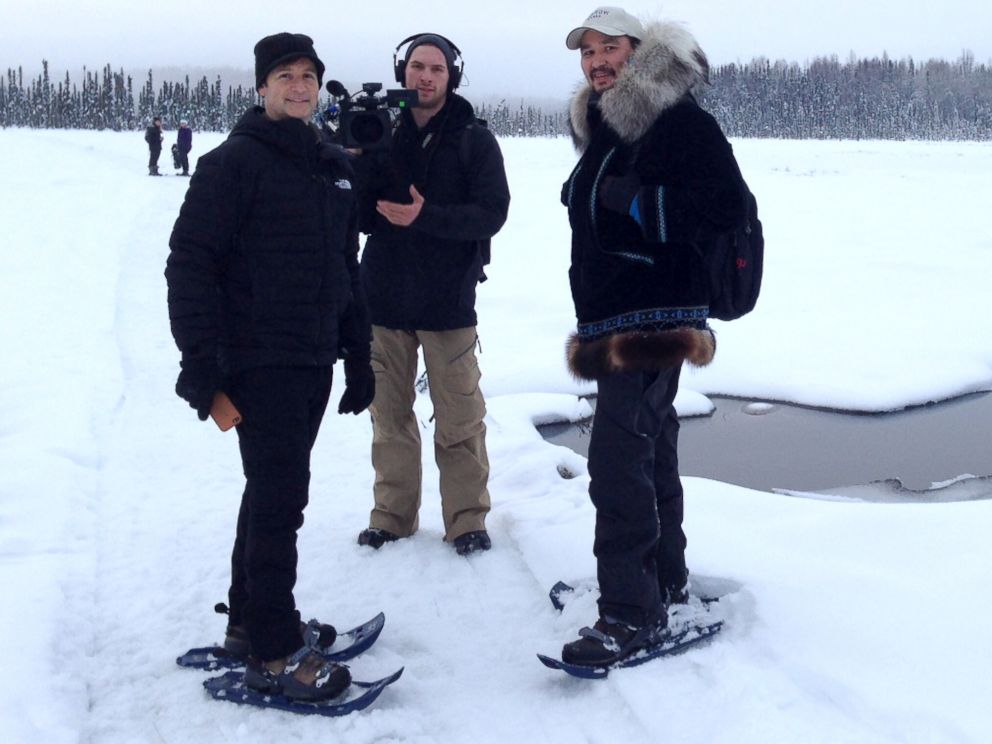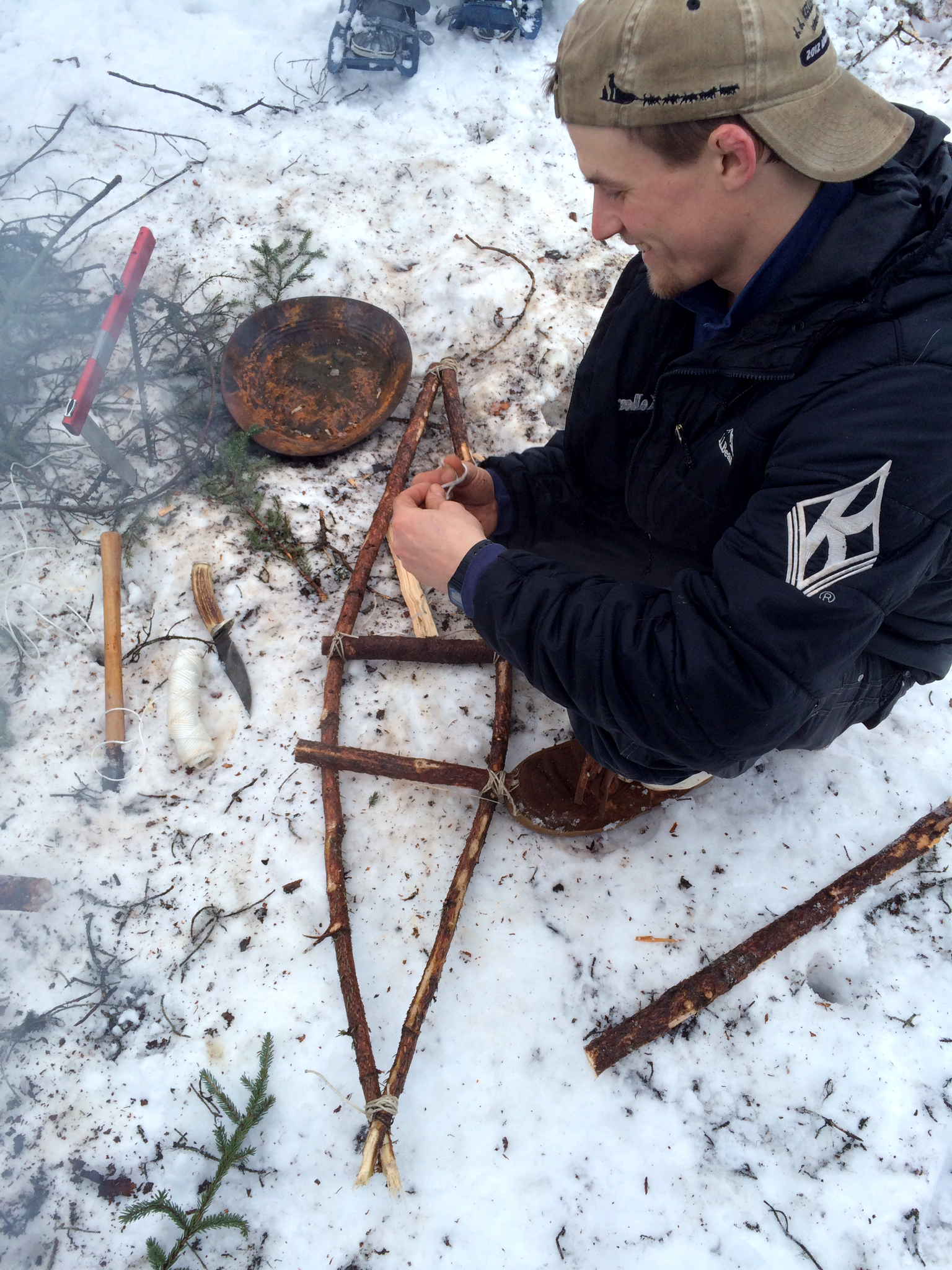How To Survive in Frigid Wilderness, Alaska Style
Two outdoorsmen explain how to build snowshoes and fires with cotton balls.
Dec. 13, 2013— -- Two men, an Iditarod champion and an Alaska-born marathon runner, are out to prove they can survive days in the frozen Alaskan wilderness on pure wile.
Dallas Seavey, an unstoppable 26-year-old outdoorsman, and Eddie Ahyakak, a 36-year-old survival expert, took on this challenge with no cars, no food and no shelter. For transportation, they mushed dog sleds across the icy terrain. They are just two contestants in a motley crew of outdoor survival elite who have put their skills on the line for the National Geographic reality show, "Ultimate Survival Alaska."
"For Eddie and I, and so many other Alaskans, the wilderness is our home," Seavey said.
For 48 hours, "Nightline" traveled with the two companions, building shelters from scratch, starting fires without matches and even building snowshoes from tree branches.

Watch HERE as ABC News' Neal Karlinsky and Michael Cappetta get hands-on training in dog sledding, snowshoe building and fire-starting.
"I would be far more afraid of trying to spend a week on my own in New York than I would a week on my own in Alaska," Seavey said. "This is my element. This is my home and I know how to handle getting trapped in a whiteout, I know how to handle falling in a river."
In the show, teams are dropped into the middle of the Alaskan outback with only the gear they can carry and some often impressive ingenuity to get them out. But in each episode it seems someone is always on the verge of catastrophe -- real life danger. In one episode, a contestant named Jimmy was feared drowned after his boat tipped over.
Seavey said for the most part, the dangerous situations in the show are a serious reality.
"From my perspective, the show intentionally put us in dangerous places," he said. "That was the intention of the show, not to put us in a national park with a paved sidewalk. Was it intentional that we got in really bad situations? No, but we were put in an element where that was a possibility, a very real possibility."
Both Seavey and Ahyakak agree that there are times during the show when making television becomes secondary to having to actually save someone in a scary position.
"That's the nature of Alaska," Ahyakak said. "It's every corner you turn there's danger and there's a lot of risk. Going into it we all knew that."
In another episode, a contestant fell off his dog sled, something that Seavey said is nearly impossible to recover from and was "definitely not planned."
"You never intentionally lose a dog team," he said. "That's the worst-case scenario. They love to run! They are not going to stop for you. He was able to catch up on foot -- a rare feat."
To survive in the frigid wilderness, Seavey said having something to drink is critical.
"Drink something hot. Get it in your body," he said. "It'll make a huge difference, warm up your core, which will then warm up your extremities."
Even when everything is soaking wet from snow, Seavey got a fire started using birch bark and moss. Instead of using matches or a lighter, Seavey rubbed some Chapstick on a cotton ball -- two items he said he keeps on him at all times. Both men carried a simple flint to scrape with a knife to get a spark. Once the cotton ball is lit, it can act like a candle and get a fire started.

Ahyakak wears what he called a "survival necklace," which had a Leatherman tool, a mini-LED light, the flint and a small bottle of chlorine to filter and purify water.
On "Ultimate Survival Alaska," the contestants are constantly on the move over mountains, across rivers, all on a tiny supply of uncooked rice and beans supplied by the show, plus whatever they can catch in the wild.
But for Ahyakak and Seavey, the series is just a way to show off their way of life.
"A true survivor can go into the woods with a knife and a flint and stay as long as he wants," Seavey said. "That's someone who can mesh with the wild and survive, and that's how Eddie and I have grown up."
Ahyakak grew up in a small Inupiat community on the banks of the Arctic Ocean. "There is a lot of pride for me, and representing my people -- there are 15,000 of us," Ahyakak added. "This is who we have been for thousands of years."




